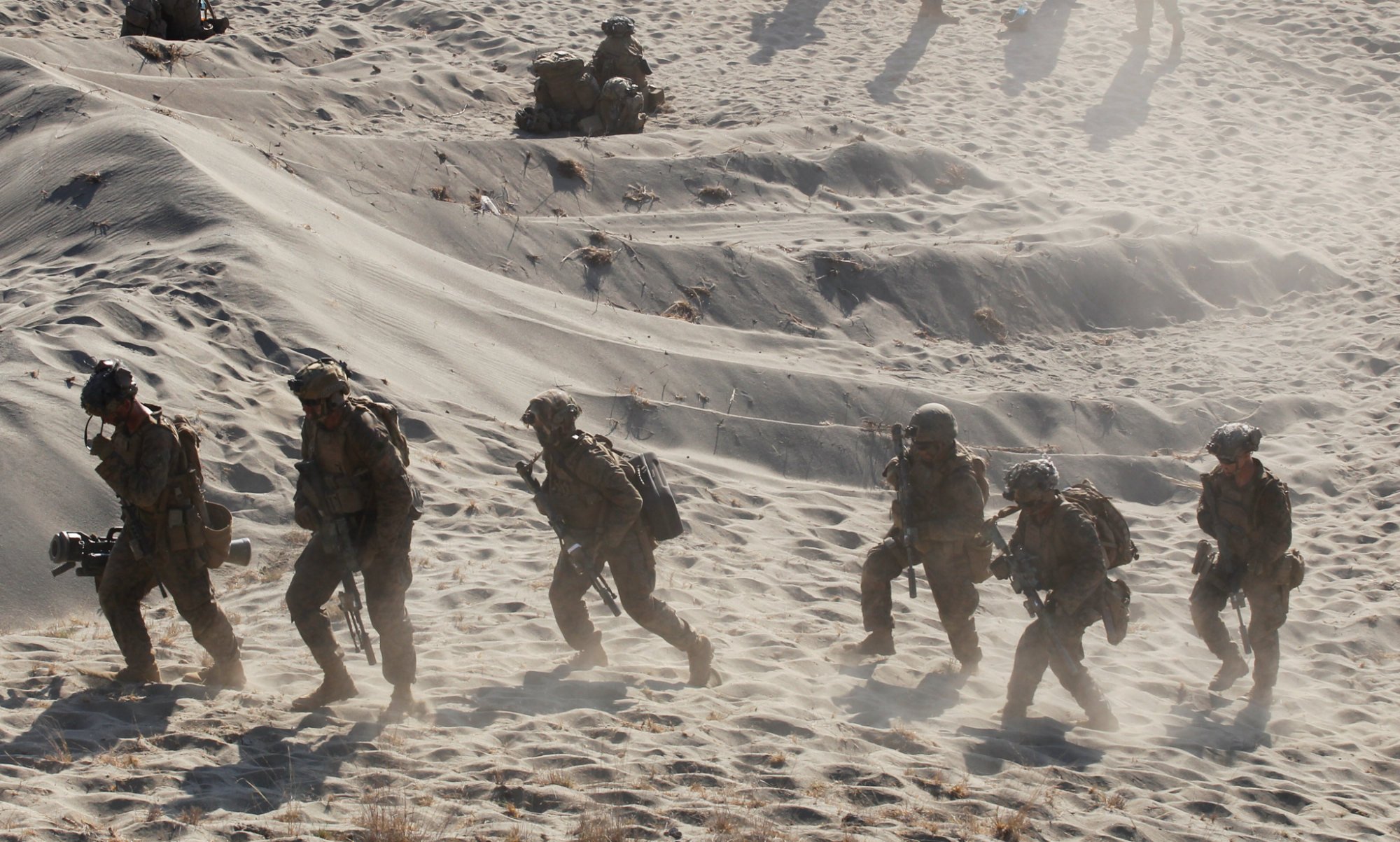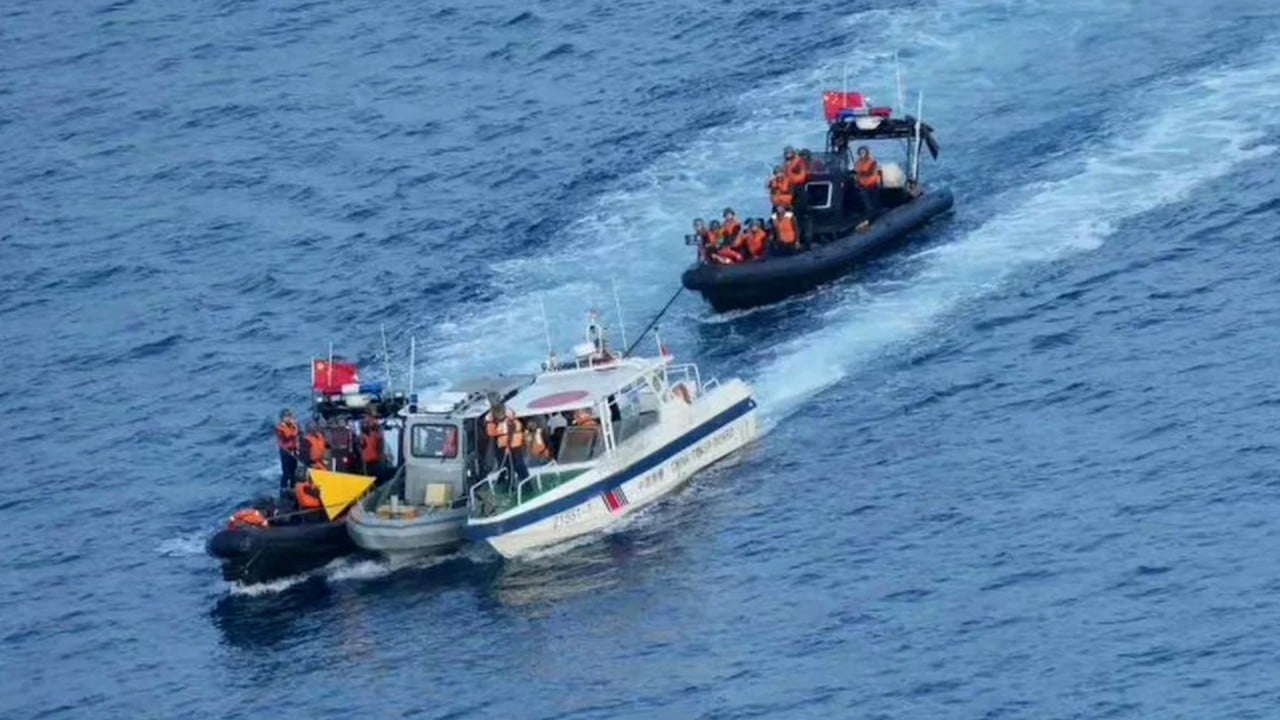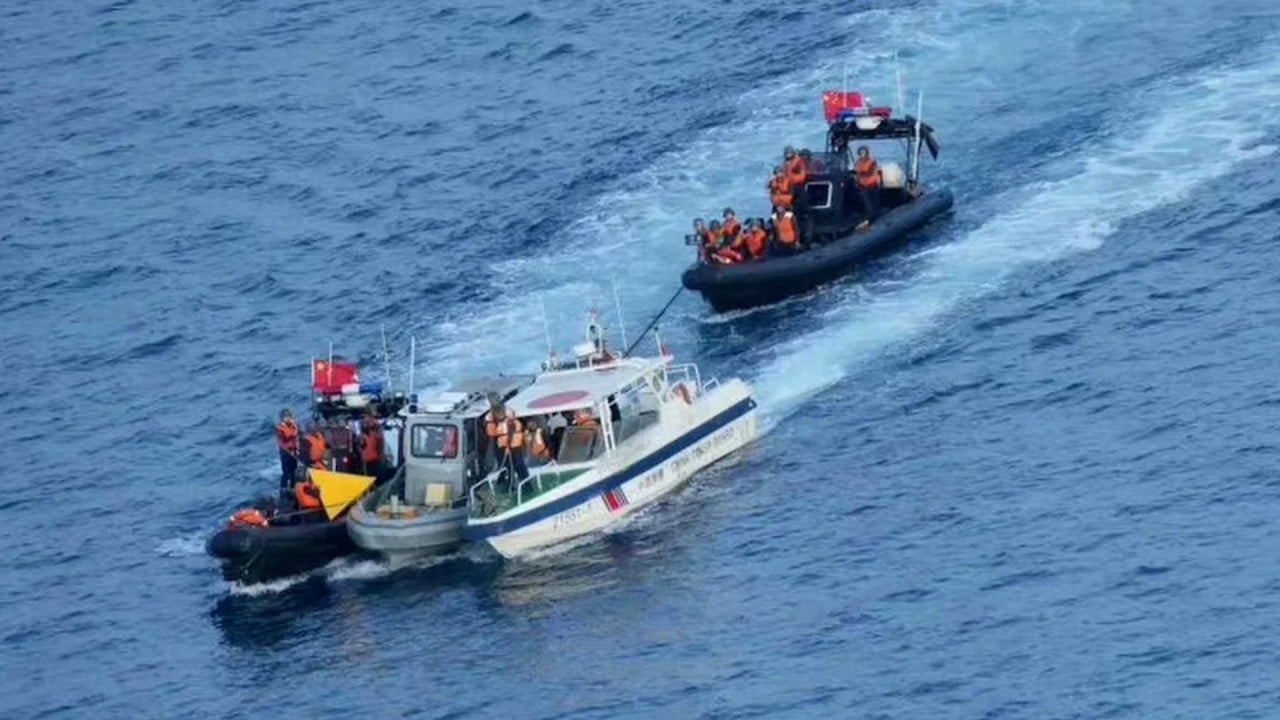When Philippine and Chinese ships clash in the Spratly Islands, a Chinese admiral panics and launches a tactical nuclear missile at his opponents, obliterating them. Injured, he is brought ashore to Palawan where he is stunned to be met by Filipino communist insurgents who invite his force to help them take over the archipelago.
As the rebels stage a coup, Chinese soldiers shoot the Philippine president dead. Chinese planes and ships soon pour into Philippine cities and ports, forcing the government remnants to flee to Mindanao. Alarmed, the United States mobilises air and naval forces to prevent the entire region from going under.
Did a badly written tech thriller published in 1991 lay out how China might conquer the Philippines?
Sky Masters by US Air Force cheerleader Dale Brown is old and full of basic political mistakes, but sketches a scenario worth considering given current tensions. It would not be the first time fiction has anticipated history – several famous “faction” books predicted how World War II would play out in the Pacific.
In 1921, Japanese general Kojiro Sato wrote If Japan and America Fight, predicting that on a balance of both countries’ strengths and weaknesses, Japan’s fighting spirit would allow it to prevail in any clash with the US.

Ricardo Jose, a history professor at the University of the Philippines specialising in World War II, noted how two American authors wrote predictive fictional books.
“In the 1920s there was The Great Pacific War by Hector Bywater which discussed a war between Japan and the US … earlier Homer Lea wrote Valor of Ignorance … both had Japan starting the war by surprise attacks, invading the Philippines and so forth. Both were translated into Japanese … They may have influenced Japanese naval strategy.”
He told This Week in Asia that the Lea and Bywater books were both accurate for their time. Lea’s book, published in 1909, was reprinted in 1942 to dramatise supposedly how long Japan had been preparing for war.
Brown’s novel is a military fantasy along the lines of Tom Clancy’s Hunt for Red October. A quick summary of the plot: the nefarious Chinese go “heh heh”, the Filipinos cry “help us!”, the American president says “we’ve got to do something!” and the heroes speak up “this is a job for us, the US Air Force and our super gizmos!”
It is supposedly set in 1994, but was clearly written in 1989 at the latest. In its pages, the Soviet Union still exists, Mount Pinatubo in the Philippines has not erupted, and there is no trace at all of the First Gulf War.
Brown’s critics would say he clearly did not spend a dime on basic research. For instance, the Philippines does not have two vice-presidents, has no National Guard to summon and does not worship soccer. Assuming a president can be elected through a coalition of the Communist National Democratic Front and the Moro National Liberation Front is equivalent to saying a US president can win by uniting the Mormons and the Amish. In the Philippines, power resides in the hands of the oligarchy.
“Mikaso”, “Teguina” and “Tamalko” are not Filipino names. And Filipinos would laugh at the idea of their country being renamed the Democratic Republic of Aguinaldo, after a figure popularly held in contempt.
The Philippine armed forces in his novel would have been shocked and delighted with the weapons Brown arms them with: F4 Phantoms, Harpoon missiles and sophisticated radar. The truth was in 1991 the military had no modern weaponry.

Sky Masters is a page-turner for readers enamoured with high-technology aerospace hardware, with thousands of words devoted to detailed military air force procedures and equipment.
Flaws aside, the work, written more than three decades ago, was built on very topical foundations: tensions in the South China Sea, the power vacuum left by the closure of US bases in the Philippines, the threat posed by China, and the political instability of the Philippines.
Brown stages a reasonably acceptable scenario where a Chinese naval task force encounters a Philippine detachment surveying for oil in the Spratlys. The Chinese admiral goes rogue and fires a nuclear weapon. China somehow finds the ships and aircraft to invade the Philippines, Beijing buys off Vietnam by offering it the entire South China Sea, and the invaders mysteriously take over the Philippines in a week with the aid of communist guerillas and military rebels.
Apparently Japan, South Korea and Taiwan all just sit around and do nothing.
As the US president’s chief adviser exclaims: “I see the Chinese as a serious military threat to our national interests in the region, if they take the Philippines, they can militarily and economically threaten every other Pacific Rim nation. We’ll have no choice but to build up our own military forces in the region to counterbalance them. We must act.”
For his part, the Chinese admiral ruminates: “It was even better if the Chinese were invited to occupy the islands! It would forever end the domination of the United States in the Pacific.”
The book ends with a battle off Davao where the US Air Battle Force, staging waves of sophisticated bombers, savages the Chinese navy and landing force with a host of missiles and fuel air explosives. The crazed Chinese admiral is stopped from launching another nuclear missile, the remnants of the Chinese forces are rounded up or abandon the islands as they gnash their teeth in preparation for the sequel.
Nuclear war and a Duterte echo
Ronald Llamas, a former presidential political adviser, finds most of the premise implausible. He told This Week in Asia that factions such as the Communist Party of the Philippines and its armed wing New People’s Army were now “at their weakest and very anti-China” after their heyday in the 1980s.
The Armed Forces of the Philippines was unlikely to support such factions, Llamas said, adding that it was “improbable for China to invade or nuke the Philippines because it will start a nuclear war which will destroy the whole world”.
Filipinos might also recognise the novel’s traitorous “first vice-president”, described as “active in strengthening economic and cultural ties with China” and “working not only to strengthen economic ties but military and political ties as well”, as a caricature of Rodrigo Duterte, the Philippines’ former president.
But Llamas told This Week in Asia a rebellion as depicted in Sky Masters was unlikely, as it “will only be viable with the support of the military, and the military is very anti-China while the Dutertes are [seen as the] main allies of China in the Philippines”.
While fantastical scenarios such as a nuclear war or amphibious invasion were not uncommon in novels, strategists in real life were more conscious of geopolitical concerns and tensions, said Jose from the University of the Philippines.
“It’s [the Philippines] moving into alliance building. I don’t think China will risk going to war at this point,” he said of the scenarios posed in Sky Masters.

Over the past few years, US strategists have been enacting variations of a war breaking out over Taiwan, with the US typically losing. In the aftermath of one war game, Politico reported one general as saying the Chinese “just ran rings around us … they knew exactly what we were going to do before we did it”.
In a 2022 research report “The Return of Great Power War”, the US think tank Rand Corporation warned that a conflict between the two countries “is also likely to extend to cyberspace and possibly outer space”.
A former US Air Force navigator, Brown shot to fame in the 1980s with his first novel, Flight of the Old Dog, about a souped up B-52 “Megafortress” that raids the Soviet Union to knock out a super laser. Sky Masters is his third book, and brings back characters from the first one.
Brown, who is still writing, has more than a dozen thriller books to his name by now, with most centring on the exploits of a character named Patrick McLanahan, a tough, quiet hero who is coincidentally a US Air Force navigator. Among the scenarios explored are a mainland Chinese invasion of Taiwan, US aerial strikes in Turkmenistan to fight off the Taliban and a Russian invasion, and China’s anti-ship ballistic missile superweapon.

The main takeaway in Sky Masters, written during the period US bases closed and American forces pulled out of the Philippines, is that Manila will need US assistance to stand up to China’s encroachment. It is something the government of President Ferdinand Marcos Jnr is clearly building on.
With the tension and militarisation in the South China Sea growing, we can probably expect more what-if novels – only this time China will be bristling with hi-tech gizmos as well.
Alan Robles is a freelance foreign correspondent specialising in politics, development, foreign affairs, science, environment and IT. His work has appeared in international and Philippine publications. He lectured for 12 years on digital media at the Internationales Institut fuer Journalismus in Berlin.



